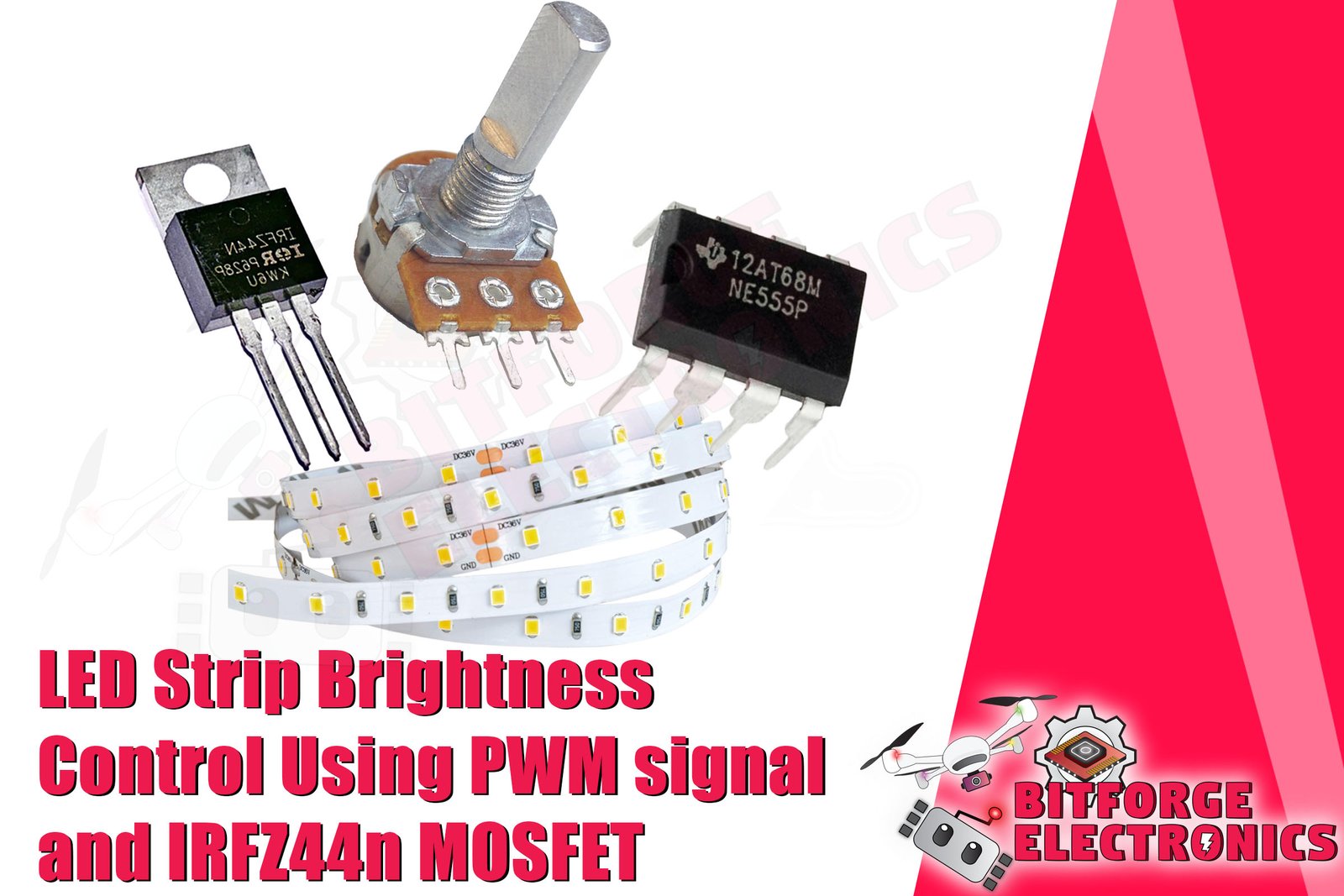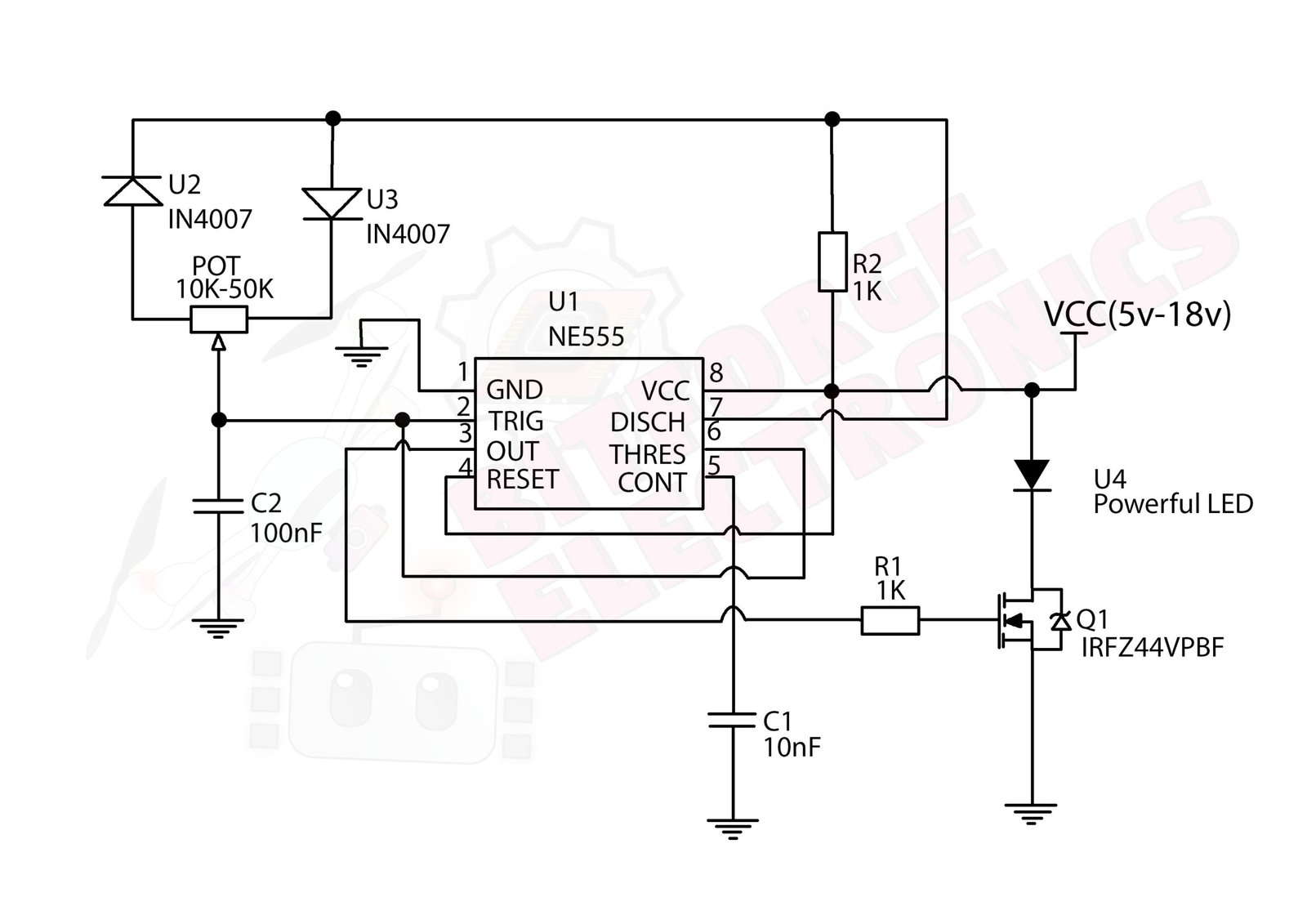
Introduction
In our day to day life, we are constantly controlling different kinds of lights, AC/DC motors and many more appliances. Instead of just turning something ON or OFF, sometimes it is necessary to regulate the intensity of light or speed of motors. For controlling the intensity of DC lights and regulating the speed of DC motors, it is quiet straight forward. Using PWM signals along with a MOSFET, we can achieve this functionality. We can use a 555 Timer IC to generate a PWM signal as the 555 timer IC operates in an astable multivibrator mode. Using a potentiometer, the duty cycle of the 555 timer IC can be varied. Which will essentially vary the brightness of the LED or the speed of the DC motor. The low-level voltage and the low power delivery of the 555 timer IC limits the controlling capabilities. Hence an IRFZ44n MOSFET can be used to drive high power DC LEDs using the low-level voltage of the 555 timer IC. So, in this tutorial, we are going to create a LED brightness circuit using a simple 555 timer IC and IRFZ44n MOSFET.
Best Use Case
- Adjustable home lighting
- Energy-efficient lighting solutions
- Customizable ambiance creation
- Remote lighting control
- DIY electronics projects
Required Components
- Adjustable home lighting
- Energy-efficient lighting solutions
- Customizable ambiance creation
- Remote lighting control
- DIY electronics projects
Circuit Diagram

Instructions
The hardware setup should be made according to the above diagrams. The circuit can be implemented on a breadboard or on a Veroboard for proper connections. Even better, the whole circuit can be implemented on a PCB using the layout design file from the files section of this page. After the setup is made, we need to just turn on the power switch. Afterwards, we can now control the brightness of the LED strip using the rotation of the potentiometer.







